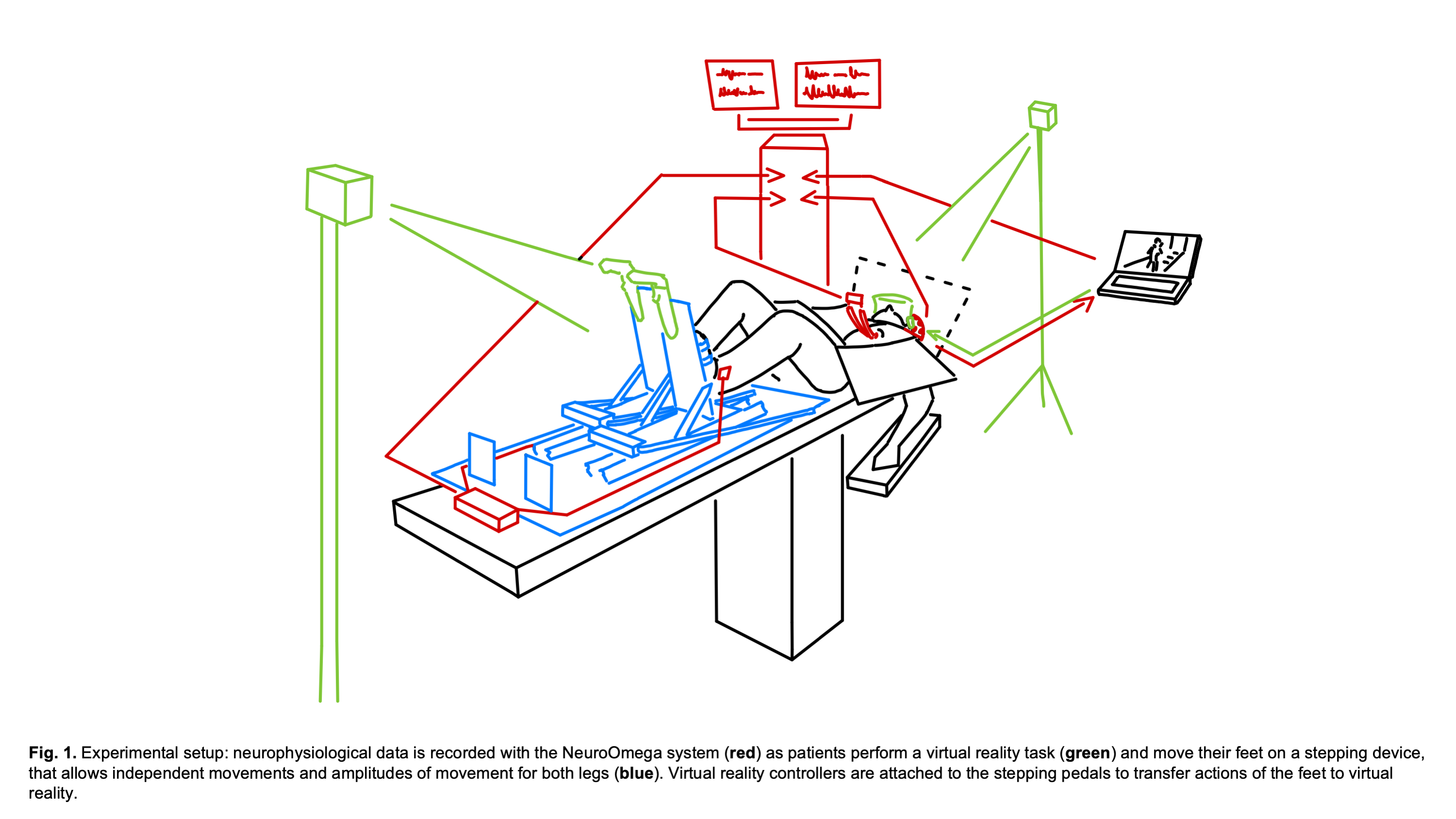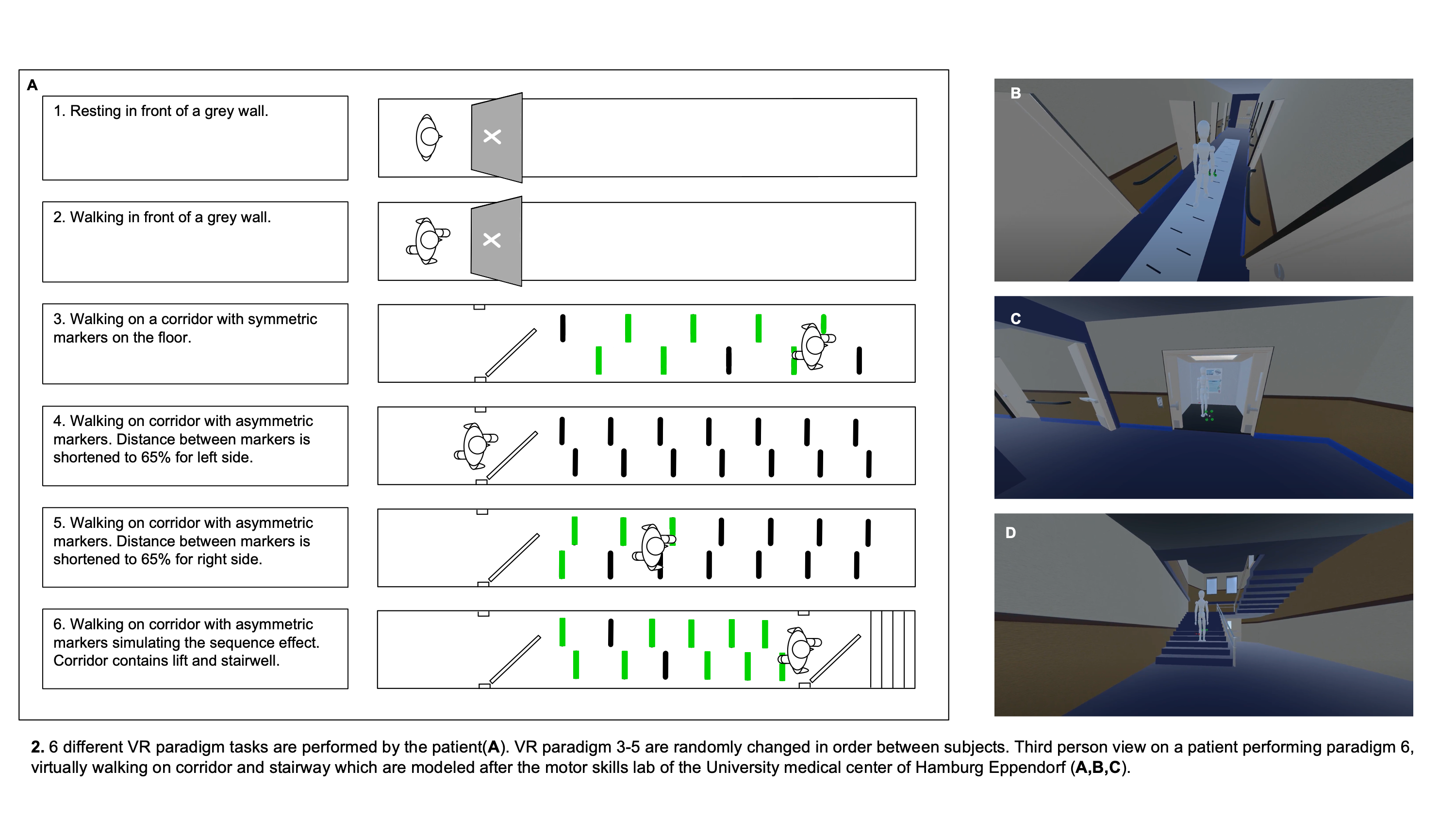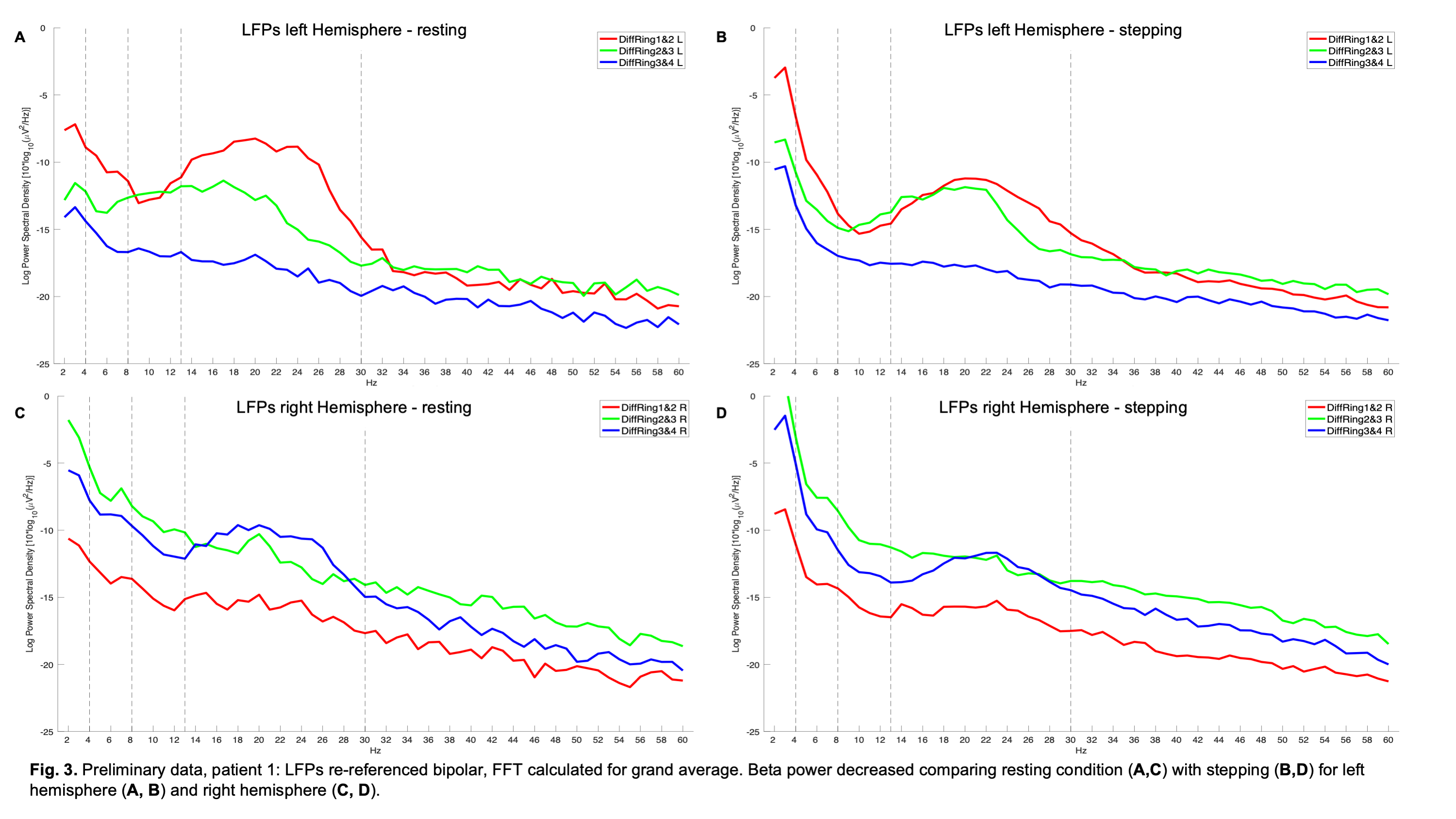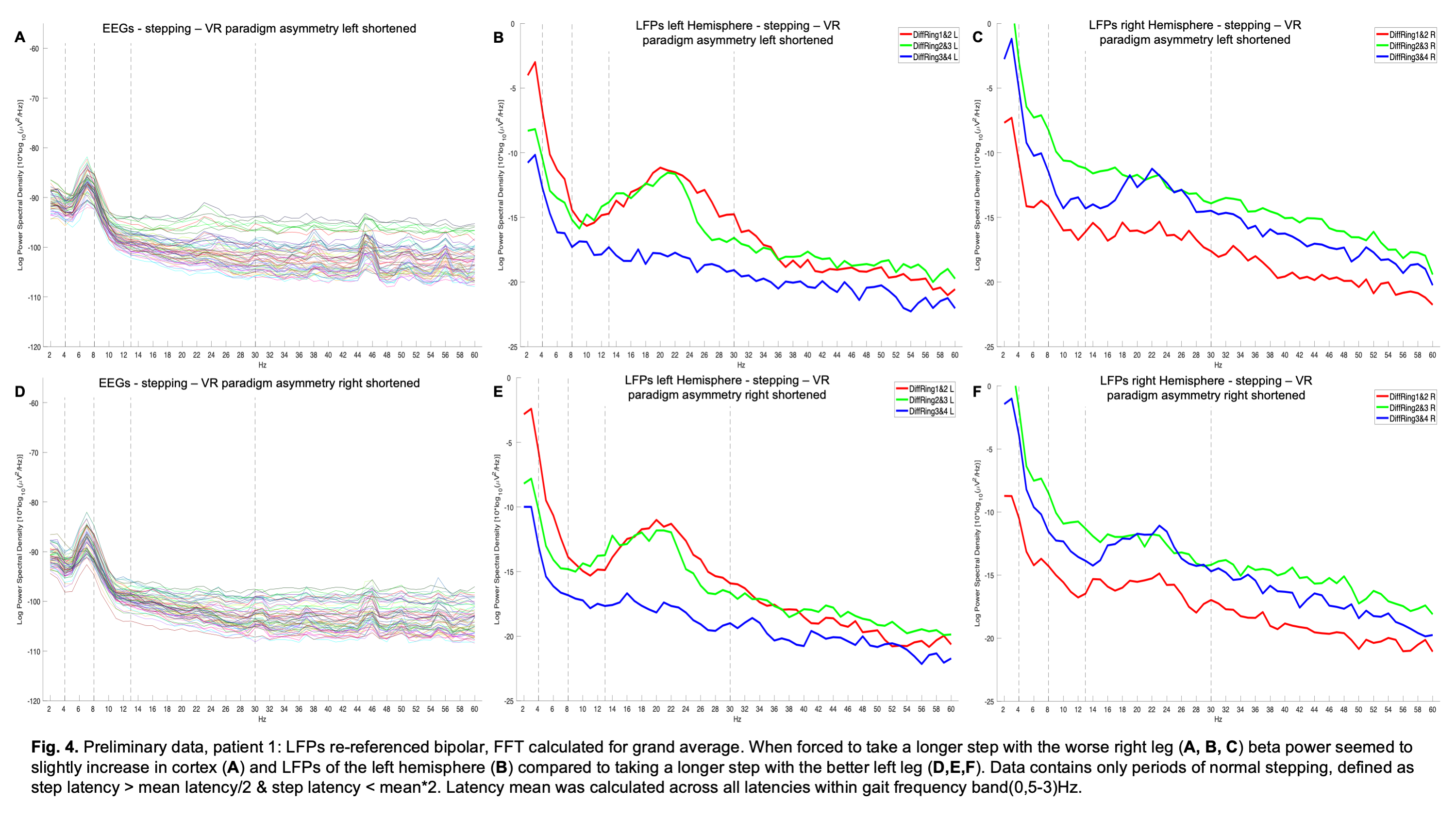Category: Parkinson's Disease: Neurophysiology
Objective: The aim of this study is 1) to characterize gait-related neuronal oscillations and functional connectivity changes between cortico-subthalamic network nodes in Parkinson´s disease (PD) patients performing a stepping task and, 2) to assess the effects of gait symmetry manipulation by means of virtual reality (VR).
Background: Gait disorder and freezing of gait (FOG) represent a poorly understood symptom complex in PD. Recent studies found relations between gait asymmetry and the severity of FOG [1] and potential therapeutic amelioration of FOG by enhancing gait symmetry [2].
Method: Chronically implanted deep brain stimulation (DBS) patients perform a stepping task on a custom-made stepper, whilst measuring LFPs either during surgical replacement of the pulse generator or with a pulse generator wirelessly streaming LFPs. Furthermore, 64-channel EEG, accelerometry of ankle movements and pupillometry [figure1] are obtained.
An immersive VR environment is used to modulate the patients stepping. Markers appear on the floor either symmetrically or shortened to 65% for one leg to induce asymmetric stepping [figure2]. Clinical assessment consists of gait parameters measured using a GAITRite electronic walkway system, MDS UPDRS III and Ziegler’s course [3] performed in MED OFF/STIM OFF, MED OFF/STIM ON, MED ON/STIM ON conditions. Additionally, a cognitive test (MoCA) and questionnaires (MDS UPDRS I, II, IV, FOG-Q, FOG-C) are conducted.
Oscillatory properties of LFPs, EEG and pupillometry are assessed referring to gait events.
In this on-going trial, 1 PD patient (male, age 70, disease duration 3 yrs.) was assessed 1 year after DBS implantation.
Results: MDS UPDRS III improved in STIM ON/MED ON (23) by 20.6% and STIM ON/MED OFF (26) by 10.3% compared to STIM OFF/MED OFF (29). Preliminary findings indicate a decrease of subthalamic beta power oscillations during stepping compared to resting [figure3] and an increase of subthalamic and cortical beta power oscillations during stepping when the worse leg was forced to take the longer step [figure4].
Conclusion: Recording and synchronizing of LFP data from brain sensing pulse generator or externalized leads of DBS electrodes with EEG data, pupillometry and accelerometry is feasible in this experimental setting using VR.
References: 1. Plotnik, M., Hausdorff, J.M. The role of gait rhythmicity and bilateral coordination of stepping in the pathophysiology of freezing of gait in Parkinson’s disease. Mov. Disord, 2008. 23: p. 444–450.
2. Fasano, A., Schlenstedt, C., Herzog, J., Plotnik, M., Rose, F.E.M., Volkmann, J., Deuschl, G., Split belt locomotion in Parkinson’s disease links asymmetry, dyscoordination and sequence effect. Gait & Posture, 2016. 48: p. 6–12.
3. Ziegler, K., Schroeteler, F., Ceballos-Baumann, A.O., Fietzek, U.M., A new rating instrument to assess festination and freezing gait in Parkinsonian patients. Mov. Disord. 25, 1012-1018.
To cite this abstract in AMA style:
J. Reuss, A. Gulberti, M. Knorr, M. Sengelmann, T. Schneider, M. Schaper, W. Hamel, A. Engel, C. Gerloff, C. Moll, M. Pötter-Nerger. Effects of gait symmetry manipulation on cortico-subthalamic interhemispheric coupling in parkinsonian patients by use of virtual reality [abstract]. Mov Disord. 2022; 37 (suppl 2). https://www.mdsabstracts.org/abstract/effects-of-gait-symmetry-manipulation-on-cortico-subthalamic-interhemispheric-coupling-in-parkinsonian-patients-by-use-of-virtual-reality/. Accessed April 2, 2025.« Back to 2022 International Congress
MDS Abstracts - https://www.mdsabstracts.org/abstract/effects-of-gait-symmetry-manipulation-on-cortico-subthalamic-interhemispheric-coupling-in-parkinsonian-patients-by-use-of-virtual-reality/




